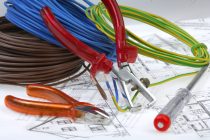Electricity is a hallmark of industrialized societies. In most of the Western world, homes not only offer the convenience of running water, but also the luxury of electricity. Electric kitchen appliances help us prepare daily meals, electronic office tools assist in managing an ever-expanding load of information, and electronic communication devices keep us connected with the world. It is almost impossible to imagine life today without electricity.
You can download this fact sheet by clicking here.
On average, a modern home wiring system consists of about 20 electric circuits and 80 outlets (without electric heating) plus the myriad of electric appliances and electronic devices used on a daily basis. It is scientific fact that low-level electric, magnetic and other electromagnetic fields (such as those emanating from electric home wiring systems and common appliances) have biological effects. The “only” question remaining is the significance of those health effects, and their level of harm, particularly over long periods of time.
The essential components of a low-EMR electric home wiring system, including:
- proper earthingsystem
- low-EMR wiring layout design
- shielded and twistedcables
- wiring-freewalls
- demand or cut-offswitches
- low-emission electric appliances and electronic devices
Home wiring systems are designed to protect users from electric shock and fire hazards. The National Electrical Code and local code requirements are written to achieve this end. Since those rules are not concerned with the biological effects of exposure to electric, magnetic and radio frequency fields, it is worthwhile to delve further. With rather little effort, simple precautionary steps (for example, cutting off power, shielding wires and paying attention to detail during installation) can be implemented to protect a home’s occupants from permanent exposure to low-level electromagnetic radiation.
The combined experience of a qualified electrician and a Building Biology Environmental Consultant provides the necessary knowledge for a low-EMR home wiring system. When all concerned parties work together as a team, it is possible to create a wiring system that not only meets all electrical code requirements, but even exceeds them to offer a healthy indoor environment with low-level electromagneticradiation.
The goal of a low-EMR wiring system is to keep the exposure to undesirable human-made electromagnetic radiation as low as possible. In Building Biology, the smart use of power is not limited to making energy-efficient choices; rather, it extends to eliminating or reducing unnecessary electromagnetic stress by following smart wiring practices. The construction of a new home offers the unique opportunity to incorporate Building Biology principles for a low-EMR design right from the start. Any renovation or alteration always has the potential for major improvements.
Want to learn more on this issue? Click the comprehensive online course, here below.


